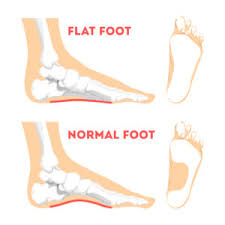BEST TREATMENT FOR FOOT & ANKLE
At AIOR's Foot and Ankle Surgery Department:

Treatment of foot and ankle conditions
At AIOR, our patients receive comprehensive care from a team comprising consultants, caregivers, therapists, and orthotists from various departments. We use advanced technology for diagnostics and rehabilitation. Our goal is to help you quickly return to your previous level of activity and provide the best possible treatment for your acute and/or chronic foot or ankle conditions.

Outpatient or inpatient
In many cases, you have the option of outpatient or inpatient care. The decision depends on you. The decision depends on your particular case as well as your personal state of health, and it will be made in close consultation with our medical staff and anaesthetists. The goal is always to reduce potential risks to a minimum, such as those based on existing conditions, to ensure successful treatment
Conservative treatment
Our conservative foot and ankle treatment encompasses a range of options:

RANGE OF FOOT SURGERY OPTIONS
In our surgical offerings, we cover a wide range of procedures, including:
PROCEDURES
Our orthopedic surgeons at the Foot and Ankle Clinic provide comprehensive foot and ankle surgical care, including
FAQs
Orthopaedic foot and ankle surgeons are medical doctors (MD and DO) who specialize in the diagnosis, care, and treatment of patients with disorders of the musculoskeletal system of the foot and ankle. This includes the bones, joints, ligaments, muscles tendons, nerves, and skin. Orthopaedic foot and ankle surgeons use medical, physical, and rehabilitative methods as well as surgery to treat patients of all ages. They perform reconstructive procedures, treat sports injuries, and manage and treat trauma of the foot and ankle. Orthopaedic foot and ankle surgeons work with physicians of many other specialties, including medicine, pediatrics, vascular surgery, endocrinology, radiology, anesthesiology, and others.
Failure or stretching of tendons or ligaments on the medial aspect (inside) of the foot and ankle may cause gradual collapse of the arch of your foot. The tendon which is located just behind the medial malleolus (inside of ankle) is called the Posterior tibial tendon. This tendon supports the arch of your foot, and allows your foot to act as a stable base during the push-off phase of walking. Additional stretching of the tendon and medial ligaments can allow the foot to rotate externally (to the outside), causing additional issues with walking and even weight bearing
During a twisting injury to the ankle, the ligaments connecting the talus and calcaneus to the fibula can become stretched, or torn. This is a sprained ankle, one of the most common orthopaedic injuries. Most ankle sprains heal by themselves within 6 weeks. Occasionally these ligaments do not heal causing the ankle to be unstable. Symptoms may include:
When a person is diagnosed to have diabetes- along with diet restrictions and medicines, patient is advised to walk. No doubt diabetic patient should walk regularly but along with it, he should know what foot care needs to be taken to avoid complications resulting from Diabetes or Diabetic neuropathy. India has become the capital of Diabetes in the world. We have the largest number of diabetic people. Diabetes is a disease which can be controlled but there is no cure. Hence when it is long-standing it is associated with some of the systemic complications like- Kidney affection- nephropathy, Eye affection- retinopathy. Similarly when it affects the nerves- its called as Neuropathy and usually, it affects feet- although it may affect other body parts also. It may casuse Ulcer- wounds, Deformity- Charcot’s joints Infections, Skin and nail problems. Urgent care and Specailist opinion should be sorted.
CONSULT AIOR FOR ORTHOPAEDICS PROBLEMS
Call Now 0612 2354130, +91 8448441016 and receive Top Quality Healthcare for you and your Family


